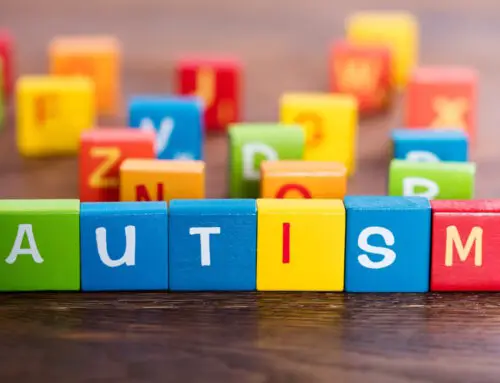For parents and caregivers of children with autism, finding appropriate and effective child care is both crucial and challenging. Autism child care requires specialized knowledge, tailored approaches, and an environment that supports each child’s unique needs while fostering development and well-being.
Autism Spectrum Disorder is a complex neurodevelopmental condition that impacts how individuals perceive the world, communicate, and interact with others. The term “spectrum” is vital because the severity and combination of symptoms differ significantly from one child to another.
Key Characteristics of ASD
Children with autism typically display challenges in two main areas:
Social Communication and Interaction:
- Difficulties initiating or maintaining conversations
- Limited eye contact
- Challenges understanding nonverbal cues like body language and facial expressions
- Difficulty recognizing others’ emotions
- Preference for solitary play
- Potential aversion to physical affection
Restricted, Repetitive Behaviors and Interests:
- Stereotyped or repetitive movements (often called “stimming”)
- Strong insistence on sameness and routines
- Resistance to changes
- Highly focused interests that are unusual in intensity
- Unusual responses to sensory input
Sensory Sensitivities
Many children with autism experience unique sensory processing challenges that significantly impact their daily functioning:
Hypersensitivity: Being overwhelmed by stimuli that others might barely notice (bright lights, background noise, clothing tags)
Hyposensitivity: Seeking additional sensory input through behaviors like spinning, rocking, or touching textures repeatedly
Sensory overload: Can lead to meltdowns, withdrawal, or behavior challenges in overstimulating environments
Early Signs and Diagnosis
Autism is typically diagnosed in early childhood, often before age three, although signs can appear as early as 18 months. Early identification is critical because research consistently shows that early intervention leads to significantly better outcomes. However, diagnoses are sometimes delayed, particularly for girls whose symptoms may present differently or be masked by learned behaviors.
The Critical Importance of Early Support
Research conclusively demonstrates that the earlier a child with autism receives specialized support, the better their long-term outcomes are likely to be. Intervention during the preschool years (ages 3-5) or even earlier can significantly impact:
- Development of communication skills
- Social interaction abilities
- Cognitive functioning
- Management of challenging behaviors
- Independence in daily living skills
Early intervention programs should be individualized to the child’s specific needs and involve collaboration between therapists, educators, and parents. These programs focus on building foundational skills and preparing children for more structured learning environments.
Essential Strategies for Effective Autism Child Care
Whether provided by parents, nannies, daycare staff, or other caregivers, effective child care for autistic children hinges on implementing strategies that create a supportive, predictable, and understanding environment.
Creating Structure and Routine
Children with autism thrive on predictability and consistency. Implementing structure helps reduce anxiety and provides a sense of security:
- Establish consistent daily schedules for meals, activities, and rest times
- Use visual schedules with pictures, symbols, or words to help children understand the sequence of activities
- Provide clear indicators for transitions between activities
- Prepare children in advance for any unavoidable changes to the routine
- Create designated spaces for different activities
Effective Communication Techniques
Adapting communication approaches is essential for successful interactions:
- Use clear, concise, and literal language
- Break down instructions into simple, manageable steps
- Allow extra processing time after asking questions or giving directions
- Supplement verbal communication with visual supports when needed
- Pay attention to nonverbal cues that might indicate needs or discomfort
- For nonverbal children, implement alternative communication systems such as picture exchange, sign language, or communication devices
Managing Behavior and Emotions
Understanding and addressing the underlying causes of behaviors is more effective than simply attempting to eliminate them:
- Recognize that challenging behaviors often serve as communication
- Identify triggers and antecedents to prevent situations that cause distress
- Use positive reinforcement to encourage desired behaviors
- Teach emotional recognition and self-regulation strategies
- Implement consistent, clear expectations and boundaries
- During meltdowns, focus on ensuring safety and providing calming support rather than discipline
- Use a calm, even tone of voice during escalated moments
Addressing Sensory Needs
Creating a sensory-friendly environment is crucial for children with autism:
- Identify each child’s specific sensory sensitivities and preferences
- Create designated low-sensory areas or “safe spaces” where children can retreat when overwhelmed
- Provide sensory tools such as noise-reducing headphones, weighted blankets, or fidget toys
- Incorporate regular sensory breaks throughout the day
- Modify the environment by adjusting lighting, reducing background noise, or organizing visual spaces
Promoting Social Skills Development
Social skills often need to be explicitly taught to children with autism:
- Use social stories to explain social situations and expected behaviors
- Model appropriate social interactions
- Create structured opportunities for peer interaction
- Teach turn-taking, sharing, and conversation skills through playful activities
- Recognize and build upon the child’s social strengths
- Provide supported opportunities for positive social experiences
Personalizing Learning and Play
Tailoring activities to align with the child’s interests and learning style significantly increases engagement:
- Incorporate special interests into learning activities
- Break down skills into smaller, manageable components
- Provide multiple opportunities for practice and reinforcement
- Use play-based approaches to teach various skills
- Adapt activities to accommodate sensory needs and processing differences
- Celebrate progress, no matter how small
Evidence-Based Therapeutic Interventions
Several therapeutic approaches have demonstrated effectiveness for children with autism. These interventions often work in conjunction with the strategies used in home and childcare settings.
Applied Behavior Analysis (ABA)
ABA is one of the most widely researched and utilized interventions for autism:
- Focuses on understanding behavior patterns and how they are influenced by the environment
- Uses principles of reinforcement to increase desired behaviors and decrease challenging ones
- Available in various formats, including Discrete Trial Training, Pivotal Response Treatment, and Naturalistic Developmental Behavioral Interventions
- Can be implemented in different settings, including homes, schools, and therapy centers
- Is individualized based on assessment data to target specific goals
Speech-Language Therapy
This therapeutic approach addresses communication challenges:
- Helps improve verbal and nonverbal communication skills
- Enhances pragmatic (social) language abilities
- Teaches conversation skills and turn-taking
- May incorporate alternative communication systems for nonverbal children
- Works on language comprehension and expression
Occupational Therapy
Occupational therapy supports development of skills needed for daily functioning:
- Addresses fine and gross motor skill development
- Provides strategies for sensory processing challenges
- Helps with self-care skills like dressing, eating, and hygiene
- Improves play skills and peer interaction
- Supports executive functioning skills (planning, organization)
Social Skills Training
Specialized programs teach specific social skills:
- Provides direct instruction in initiating and maintaining interactions
- Teaches understanding of social rules and expectations
- Addresses nonverbal communication recognition
- May be delivered in one-on-one or group settings
- Often incorporates role-play and real-world practice opportunities
Choosing and Accessing Appropriate Child Care
Finding the right childcare setting is a significant decision for families of children with autism. Options range from in-home care (nannies, childminders) to specialized or inclusive daycare centers.
Key Factors to Consider When Selecting Child Care
Provider Experience and Training:
- Look for caregivers with specific training and experience supporting children with autism
- Ask about their understanding of autism and behavior management approaches
- Inquire about willingness to collaborate with therapists and implement recommended strategies
Environment Assessment:
- Evaluate the physical space for sensory considerations (lighting, noise levels, visual stimulation)
- Consider group size and staff-to-child ratios
- Look for designated quiet areas where children can retreat when overwhelmed
- Assess the level of structure and predictability in daily routines
Individualization Capacity:
- Determine whether the setting can implement individualized supports
- Ask how they accommodate different learning styles and needs
- Discuss their willingness to use visual supports or other specialized tools
Communication and Collaboration:
- Establish clear communication channels between parents, caregivers, and therapists
- Ensure regular updates on progress, challenges, and strategies
- Create a unified approach across all environments
Accessing Support Services and Resources
Navigating the system to access services can be challenging but is essential:
- Early intervention programs (birth to age 3)
- School-based special education services (age 3 and older)
- Healthcare coverage for therapies and treatments
- Community support groups for families
- Advocacy organizations and resource centers
- Financial assistance programs and insurance navigation support
Supporting Caregiver Well-being
Caring for a child with autism can be both rewarding and demanding. The well-being of parents and caregivers is a critical component of effective autism care:
- Join support groups to connect with others who understand
- Utilize respite care services to prevent burnout
- Access counseling or therapy when needed
- Practice self-care routines
- Build a network of trusted individuals who can provide backup care
- Stay informed about autism research and strategies through reputable sources
Final Thoughts
Providing effective child care for children with autism requires understanding, patience, specialized knowledge, and individualized approaches. Through creating structured, supportive environments, implementing evidence-based strategies, addressing sensory needs, and accessing appropriate therapeutic interventions, caregivers can significantly impact a child’s development and quality of life. The journey may present challenges, but with the right resources, support, and commitment to understanding each child’s unique needs, children with autism can thrive and develop to their fullest potential.
Remember that each child with autism is unique, with their own constellation of strengths and challenges. The most effective care approaches recognize this individuality while implementing proven strategies that foster development, independence, and well-being. By committing to understanding autism and implementing supportive care practices, caregivers play a crucial role in helping children with autism build the skills they need for a fulfilling life.
Learn more at inhomecare.com where you’ll find diverse resources, practical solutions, and compassionate guidance tailored to the needs of your loved ones today.



